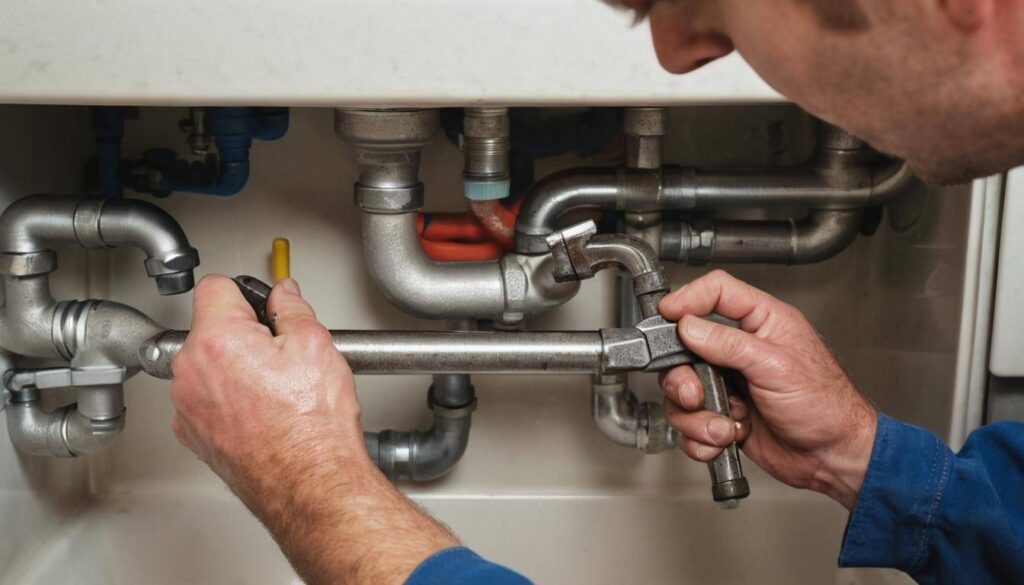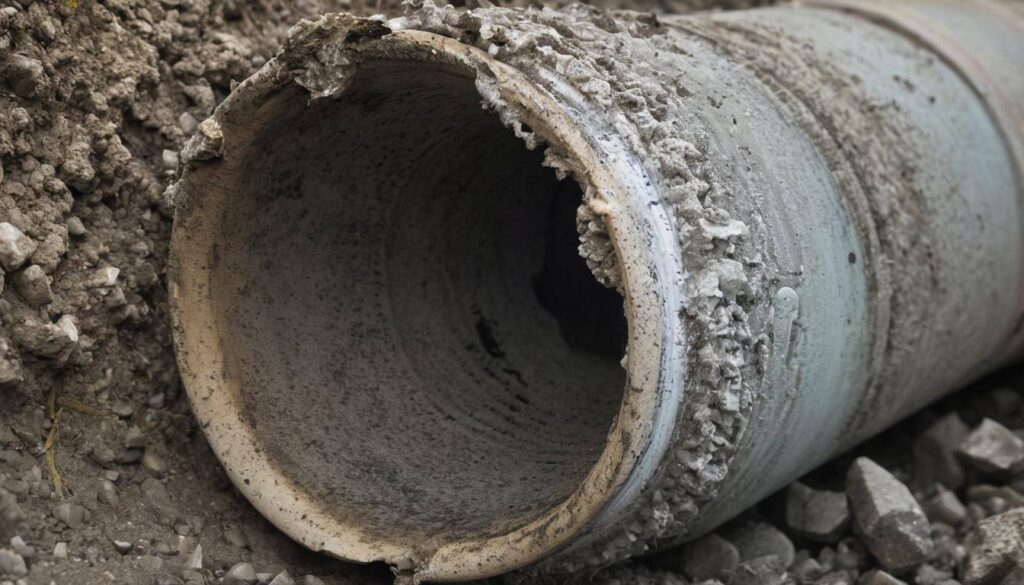Hot water is an invaluable resource that plays a vital role in our daily lives. From taking refreshing showers to washing dishes and doing laundry, access to hot water is essential for maintaining hygiene and comfort. Whether it’s for personal care or domestic chores, the convenience and benefits of hot water cannot be overstated.
However, imagine the frustration of eagerly turning on the faucet only to receive a chilling blast of cold water. A malfunctioning hot water tank can quickly disrupt our routines and leave us longing for a reliable supply of warm water.
The inability of a hot water tank to heat up can stem from various causes, all of which require careful inspection and troubleshooting. In this article, we will delve into the common culprits behind this issue and guide you through potential solutions.
Brief Explanation of the Importance of Hot Water in Daily Life
Hot water serves as more than just a luxury; it is an essential component in maintaining cleanliness and health. A comfortable warm shower not only helps us unwind but also has therapeutic benefits by soothing tired muscles and relieving stress. Additionally, using hot water for personal hygiene ensures proper sanitation by effectively removing dirt, oil, and bacteria from our bodies.
Moreover, having hot water readily available is crucial for household chores like washing dishes or doing laundry effectively. Hotter temperatures aid in dissolving grease on dishes while enabling detergent to combat stubborn stains on clothes more efficiently.
Statement of the Problem: Hot Water Tank Not Heating Up
The main concern at hand is when your hot water tank fails to heat up as expected. When this problem arises, it can be frustrating and inconvenient since it hampers everyday activities that rely on heated water. There are several potential reasons why your hot water tank might not be heating up, ranging from electrical issues to component malfunctions.
To tackle this problem effectively, it is essential to identify the underlying cause. By examining each possible reason and troubleshooting accordingly, you can restore your hot water supply and ensure the smooth functioning of your hot water tank.
Overview of Hot Water Tanks Providing a Steady Flow of Warmth:
Unveiling the Inner Workings of Hot Water Tanks
A hot water tank, also known as a water heater, is an essential appliance that ensures a consistent supply of warm water for various household needs. Understanding its basic functioning is crucial in troubleshooting any heating issues that may arise. At its core, a hot water tank operates by storing and heating water to the desired temperature, ready for immediate use.
The process begins with cold water entering the tank through an inlet pipe connected to the main water supply. Inside the tank, several key components work together to facilitate efficient heating.
These components include:
-
Thermostat: acting as the brain behind temperature regulation, the thermostat controls when and how long heat is generated in order to maintain optimal warmth.
-
Heating Element: found within electric tanks, heating elements convert electrical energy into heat energy, warming up the surrounding water to meet desired temperatures.
-
Dip Tube: specifically present in most tanks, dip tubes ensure that cold water entering through the inlet pipe is directed towards the bottom of the tank where it can be efficiently heated.
Different Types of Hot Water Tanks Diverse Vessels for Warmth:
Exploring Gas, Electric, and Solar Water Heaters
Hot water tanks come in various types to cater to different energy sources and individual preferences. The three most common types are gas-powered tanks, electric tanks, and solar-powered tanks. Each type has distinct characteristics that influence their efficiency and cost-effectiveness.
Gas-Powered Tanks: These tanks utilize natural gas or propane as the primary energy source for heating water. A gas burner located at the bottom of the tank ignites when hot water is needed, transferring heat to the surrounding water.
Gas-powered tanks are often chosen for their rapid heating capabilities and can operate independently during power outages. Electric Tanks: Electrically powered tanks rely on heating elements immersed in the tank to warm the water.
When electricity flows through these elements, they generate heat, causing the surrounding water to increase in temperature. Electric tanks are typically less expensive upfront compared to gas-powered alternatives and require a reliable electrical supply.
Solar-Powered Tanks: Harnessing renewable energy from sunlight, solar-powered tanks use solar panels to capture and convert solar radiation into heat energy. This heat is then transferred to a collector within the tank where it warms up the stored water.
Solar-powered tanks offer significant long-term savings on utility bills but may require additional components like backup heaters for cloudy days or increased hot water demand. Understanding these different types of hot water tanks allows homeowners to select an option that aligns with their energy preferences and budgetary concerns.
Potential Causes for Lack of Heating
Insufficient power supply or tripped circuit breaker
When it comes to electric hot water tanks, a lack of heating can often be attributed to an insufficient power supply or a tripped circuit breaker. Electrical issues can disrupt the flow of electricity to the heating element, preventing it from generating the necessary heat. In such cases, it is crucial to check the power supply and ensure that the circuit breaker associated with the hot water tank has not been tripped.
Inspect the main electrical panel and look for any flipped switches or blown fuses that might indicate a problem. If a tripped breaker is found, reset it by firmly pushing it back into its on position.
Malfunctioning thermostat or temperature setting
The thermostat plays a pivotal role in regulating the temperature of your hot water tank. If your tank is not heating up as expected, there is a possibility that the thermostat is malfunctioning or improperly set. The thermostat monitors and controls the water temperature by activating and deactivating the heating element as needed.
To troubleshoot this issue, start by turning off power to the tank and carefully removing any access panels covering the thermostat. Use a multimeter to test if there is continuity across its terminals when set at an appropriate temperature.
If there is no continuity detected, you may need to replace the thermostat entirely. If continuity exists but incorrect readings are obtained, adjust the temperature setting accordingly.
Faulty heating element(s)
Heating elements are responsible for actually generating heat within your hot water tank by converting electrical energy into thermal energy through resistance. A faulty heating element can significantly impact your tank’s ability to produce hot water efficiently or at all.
To diagnose potential issues with heating elements, first ensure that power to your hot water tank has been turned off for safety reasons. Using an ohmmeter, check the resistance of each heating element.
If the readings are significantly different from the manufacturer’s specifications or if no continuity is detected, it is likely that one or both of the heating elements are defective and need replacement. Remember to follow proper procedures when removing and installing new elements to avoid any unnecessary complications.
Sediment buildup or mineral deposits inside the tank
Over time, sediment accumulation and mineral deposits can impair the heat transfer capabilities of your hot water tank. These substances settle at the bottom of the tank, insulating it from direct contact with the heating element, thereby reducing its efficiency. To address this issue, you can flush out sediments by following a step-by-step guide.
Start by turning off power to your hot water tank and shutting off its water supply. Attach a hose to the drain valve located near the bottom of your tank and route it to a suitable drainage area.
Open all hot water taps in your house to relieve pressure, then open the drain valve to allow sediments and debris to flow out through the hose until clear water runs freely. By performing this maintenance task periodically, you can enhance your tank’s heating performance and prolong its lifespan.
IV: Advanced Troubleshooting Techniques
A: Pressure relief valve issues
The pressure relief valve in a hot water tank serves as a safety feature designed to prevent excessive pressure buildup within the system. If this valve is faulty or malfunctioning, it may cause problems with proper heating.
The pressure relief valve functions by releasing excess pressure through a discharge pipe when it reaches dangerous levels.
To test this component, simply lift up on its lever momentarily while observing for any signs of water discharge through the pipe; be cautious as hot water may be released during this process if working properly.
If no signs of discharge occur or if there is continuous leakage afterwards, it is recommended to replace the pressure relief valve to ensure its effectiveness. Always consult the manufacturer’s instructions or a professional plumber for guidance when replacing this crucial safety device.
B: Dip tube problems
Dip tubes play a vital role in directing incoming cold water to the bottom of the hot water tank, allowing it to be heated efficiently. If there are issues with the dip tube, it can lead to inadequate heating or a lukewarm water supply. The dip tube is a long plastic pipe that extends from the top of the tank to near its bottom.
Over time, dip tubes can degrade or develop issues such as cracks or breakage. To identify potential problems with your dip tube, turn off the power and water supply to your tank and drain some water from a nearby faucet into a bucket.
If you notice low hot water pressure or cold/tepid water coming out consistently, it could indicate a malfunctioning dip tube. Replacing a faulty dip tube involves draining and partially disassembling your hot water tank; therefore, it is advisable to seek professional assistance if you are uncertain about performing this task yourself.
When facing issues with your hot water tank not heating up adequately or at all, it is crucial to investigate potential causes such as insufficient power supply or tripped circuit breakers, malfunctioning thermostats or temperature settings, faulty heating elements, sediment buildup inside the tank, pressure relief valve problems, and dip tube malfunctions. By understanding these potential culprits and following the appropriate troubleshooting steps outlined in this article, you can increase your chances of resolving these heating issues effectively.
Remember that regular maintenance and periodic inspections are key in ensuring optimal performance and longevity for your hot water tank system. Stay informed and take proactive measures whenever necessary to enjoy consistent access to reliable hot water in your daily life.



